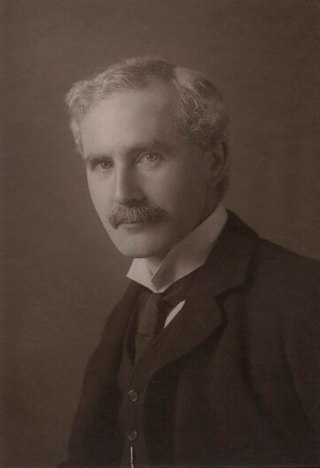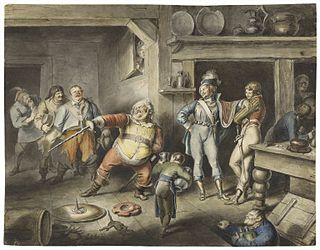Related Research Articles

Sir William Empson was an English literary critic and poet, widely influential for his practice of closely reading literary works, a practice fundamental to New Criticism. His best-known work is his first, Seven Types of Ambiguity, published in 1930.

This article focuses on poetry from the United Kingdom written in the English language. The article does not cover poetry from other countries where the English language is spoken, including the Republic of Ireland after December 1922.

Alfred Leslie Rowse was a British historian and writer, best known for his work on Elizabethan England and books relating to Cornwall.

The English Renaissance was a cultural and artistic movement in England during the late 15th, 16th and early 17th centuries. It is associated with the pan-European Renaissance that is usually regarded as beginning in Italy in the late 14th century. As in most of the rest of Northern Europe, England saw little of these developments until more than a century later within the Northern Renaissance. Renaissance style and ideas were slow to penetrate England, and the Elizabethan era in the second half of the 16th century is usually regarded as the height of the English Renaissance. Many scholars see its beginnings in the early 16th century during the reign of Henry VIII. Others argue the Renaissance was already present in England in the late 15th century.

John William Mackail was a Scottish academic of Oxford University and reformer of the British education system.
Sir Walter Wilson Greg, known professionally as W. W. Greg, was one of the leading bibliographers and Shakespeare scholars of the 20th century.

Elizabethan literature refers to bodies of work produced during the reign of Queen Elizabeth I (1558–1603), and is one of the most splendid ages of English literature. In addition to drama and the theatre, it saw a flowering of poetry, with new forms like the sonnet, the Spenserian stanza, and dramatic blank verse, as well as prose, including historical chronicles, pamphlets, and the first English novels. Major writers include William Shakespeare, Edmund Spenser, Christopher Marlowe, Richard Hooker, Ben Jonson, Philip Sidney and Thomas Kyd.

In Shakespearean scholarship, the Henriad refers to a group of William Shakespeare's history plays depicting the rise of the English kings. It is sometimes used to refer to a group of four plays, but some sources and scholars use the term to refer to eight plays. In the 19th century, Algernon Charles Swinburne used the term to refer to three plays, but that use is not current.
Muriel Clara Bradbrook (1909–1993), usually cited as M. C. Bradbrook, was a British literary scholar and authority on Shakespeare. She was Professor of English at Cambridge University, and Mistress of Girton College, Cambridge.
David Daiches was a Scottish literary historian and literary critic, scholar and writer. He wrote extensively on English literature, Scottish literature and Scottish culture.
John Nash Douglas Bush (1896–1983) was a literary critic and literary historian. He taught for most of his life at Harvard University, where his students included many of the most prominent scholars, writers, and academics of several generations, including Walter Jackson Bate, Neil Rudenstine, Paul Auster and Aharon Lichtenstein. Students from the 60's report that Bush would sometimes speak in decasyllables, so that it was hard to tell where his recitation of Milton left off and where his commentary began.

The Personal Heresy is a series of articles, three each by C. S. Lewis and E. M. W. Tillyard, first published on 27 April 1939 by Oxford University Press and later reprinted, also by Oxford University Press, in 1965. The book has been reprinted in 2008 by Concordia University Press with an Introduction by Lewis scholar Bruce L. Edwards and a new Preface by the editor, Joel D. Heck. The central issue of the essays is whether a piece of imaginative writing, particularly poetry, is primarily a reflection of the author's personality or is about something external to the author. The two positions may be summarized briefly as the subjective position (Tillyard) and the objective position (Lewis). In general, Lewis attempts to keep poetry within the reach of the common person, while Tillyard thinks of the poet as a person who is "a cut above the common person."
Aelfrida Catharine Wetenhall Tillyard was a British author, medium, lecturer on Comparative Religion and associated religious topics, spiritual advisor and self-styled mystic.
Kenneth Arthur Muir was a literary scholar and writer, prominent in the fields of Shakespeare studies and English Renaissance theatre. He served as King Alfred Professor of English Literature at Liverpool University from 1951 to 1974.
Father Peter Milward, SJ was a Jesuit priest and literary scholar. He was emeritus professor of English Literature at Sophia University in Tokyo and a leading figure in scholarship on English Renaissance literature. He was chair of the Renaissance Institute at Sophia University from its inception in 1974 until it was closed down in 2014 and director of the Renaissance Centre from its start in 1984 until it was closed down in 2002. He primarily published on the works of William Shakespeare and Gerard Manley Hopkins.
Nationality words link to articles with information on the nation's poetry or literature.

History is one of the three main genres in Western theatre alongside tragedy and comedy, although it originated, in its modern form, thousands of years later than the other primary genres. For this reason, it is often treated as a subset of tragedy. A play in this genre is known as a history play and is based on a historical narrative, often set in the medieval or early modern past. History emerged as a distinct genre from tragedy in Renaissance England. The best known examples of the genre are the history plays written by William Shakespeare, whose plays still serve to define the genre. History plays also appear elsewhere in Western literature, such as Thomas Heywood's Edward IV, Schiller's Mary Stuart or the Dutch national poet Joost van den Vondel's play Gijsbrecht van Aemstel.
Attius Labeo was a Roman writer during the reign of Nero. He is remembered for the derision that greeted his Latin translations of Homer's Iliad and Odyssey, which came to epitomise bad verse. He translated the original Greek into Latin hexameters. The satirist Persius poured scorn on Labeo. Later his name was used by English poets of the Elizabethan era to attack each other's verse.
Derek Aimone Uberto Antona-Traversi was a British literary critic who spent much of his life abroad employed by the British Council and then at United States universities. His literary criticism ranged from the Renaissance to Modernist poetry, but he specialized in Shakespeare studies. His most famous work is probably An Approach to Shakespeare first published in 1938.

Patrick Gerard Cheney is an American scholar of English Renaissance Literature. He is Edwin Erle Sparks Professor of English and Comparative Literature at the Pennsylvania State University.
References
- ↑ "Eustace M W Tillyard in the 1939 England and Wales Register". Ancestry.com. 29 September 1939. Retrieved 2 December 2018.
- 1 2 3 4 5 6 7 "Dr. E. M. W. Tillyard: English Studies at Cambridge". The Times . 25 May 1962. p. 18.
- ↑ "Personal Papers of Aelfrida Tillyard - Archives Hub" . Retrieved 10 August 2017.
- ↑ "No. 31373". The London Gazette (Supplement). 3 June 1919. p. 6949.
- 1 2 Tillyard, Stella (11 June 2017). "Angela Yaffey". The Guardian. Retrieved 2 December 2018.
